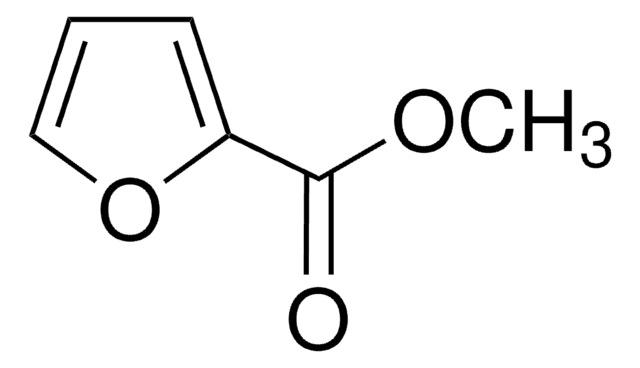Kluczowe dokumenty
W352306
Pyrrolidine
≥99%
Synonim(y):
Tetrahydropyrrole, Tetramethyleneimine
About This Item
Polecane produkty
pochodzenie biologiczne
synthetic
Poziom jakości
klasa czystości
Kosher
gęstość pary
2.45 (vs air)
ciśnienie pary
128 mmHg ( 39 °C)
49 mmHg ( 20 °C)
Próba
≥99%
temp. samozapłonu
653 °F
granice wybuchowości
10.6 %
współczynnik refrakcji
n20/D 1.443 (lit.)
gęstość
0.852 g/mL at 25 °C (lit.)
Zastosowanie
flavors and fragrances
Dokumentacja
see Safety & Documentation for available documents
alergen pokarmowy
no known allergens, no known allergens
Organoleptyczne
fishy
ciąg SMILES
C1CCNC1
InChI
1S/C4H9N/c1-2-4-5-3-1/h5H,1-4H2
Klucz InChI
RWRDLPDLKQPQOW-UHFFFAOYSA-N
Szukasz podobnych produktów? Odwiedź Przewodnik dotyczący porównywania produktów
Inne uwagi
Subscribe to our Newsletter to keep up to date on our latest Flavors and Fragrances offerings.
zastąpiony przez
Hasło ostrzegawcze
Danger
Zwroty wskazujące rodzaj zagrożenia
Zwroty wskazujące środki ostrożności
Klasyfikacja zagrożeń
Acute Tox. 4 Inhalation - Acute Tox. 4 Oral - Eye Dam. 1 - Flam. Liq. 2 - Skin Corr. 1A
Kod klasy składowania
3 - Flammable liquids
Klasa zagrożenia wodnego (WGK)
WGK 1
Temperatura zapłonu (°F)
37.4 °F - closed cup
Temperatura zapłonu (°C)
3 °C - closed cup
Środki ochrony indywidualnej
Faceshields, Gloves, Goggles, type ABEK (EN14387) respirator filter
Wybierz jedną z najnowszych wersji:
Masz już ten produkt?
Dokumenty związane z niedawno zakupionymi produktami zostały zamieszczone w Bibliotece dokumentów.
Nasz zespół naukowców ma doświadczenie we wszystkich obszarach badań, w tym w naukach przyrodniczych, materiałoznawstwie, syntezie chemicznej, chromatografii, analityce i wielu innych dziedzinach.
Skontaktuj się z zespołem ds. pomocy technicznej









